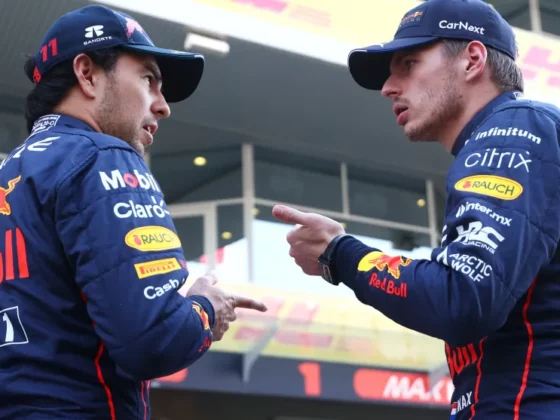The 2005 F1 season is remembered for a lot of different reasons. The circumstances around the US Grand Prix, however, mark one of the darkest eras in the ruling of the sport. Unfortunately, the impact was so big, that two years later, in 2007, was the last time we ever saw a Formula 1 race happen on The Brickyard.
Table of Contents
A little background
Back in the day, the tire war was one of the main events in Formula 1. Michelin and Bridgestone have provided rubber to the ten teams on the grid, with seven teams choosing the former, and three – the latter.
This battle proved essential for the championship because, in 2005, teams were not allowed to change tires during the race. Unless there is a puncture or an issue with the safety, we witnessed more than 20 people forming an improvised garage around the car, with only fuel going in.
During the year, the Michelin runners had the upper hand, as they won all of the races before the US Grand Prix. However, the Indianapolis Speedway, the venue used in 2005, was resurfaced with a more abrasive asphalt.
Essentially, this results in a grippier track at the expense of more load on the tires. This would be Michelin’s biggest nightmare because their tires didn’t like the banking of the last corner even before the changes.
The crash(es)
What prompted any conversations going on was the heavy crash Ralf Schumacher suffered in his Toyota. It happened during the afternoon practice session on Friday. Moreover, it was suspiciously similar to a shunt he had the year before, at the same place, leaving him with a broken back. Like his nephew – Mick, Ralf was also prone to crashes.
What was the reason for that? Left-rear tire failure. For both of the crashes. Unfortunately, Ralf was forced to miss the rest of the weekend, which prompted Toyota’s test driver – Ricardo Zonta to step in. About 10 minutes before Schumacher, Zonta suffered a rear-left tire failure himself, although at a different place on the track.
Michelin’s response
To give it credit, Michelin was actually concerned about safety. The company reacted quickly with some investigations that gave them pretty much no information. This is why they flew another type of tire from France. For some reason, they had the same problem, when tested.
Quite unfortunately, Michelin was put against the wall – reach a compromise, or suffer a great blow to its image. At meetings with the FIA, Bernie Ecclestone, and all team principals, par Jean Todt (Ferrari). They discussed the idea of installing a chicane at Turn 13 to reduce the speed. This was quickly dismissed by Max Mosley (FIA president), who said that there was not going to be a race if someone tries to alter the layout of the track.
Another potential solution was to turn the race into a non-championship one, even if that meant racing without Ferrari. This would have been the better solution for fans, but it would have brought further implications. First – this required the installation of the aforementioned chicane. Then, the teams had to find personnel to fill in for the FIA’s dismissed crew, and so on.
It is worth mentioning that all of these discussions happened on the morning of race day. So, they had to act quickly.
The Race
By the time race had started, everything was settled. Teams lined up their cars on the grid and initiated the formation lap. As drivers reached the last corner, fans were roaring for the beginning of the 2005 US Grand Prix. Then, to the crowd’s disbelief, all Michelin-shod runners pulled into the pits to retire from the race, before it has even started.
Ferrari, Jordan, and Minardi were the only teams to fight for the win. Obviously, the battle for first was only contested by Michael Schumacher and Rubens Barrichello. Except for a bizarre side-by-side moment between the two Ferraris, the race went pretty quietly.
Well, if we don’t count the boos of the rightfully disappointed fans. The only positive outcome of this race is that Thiago Monteiro (driving for Jordan), scored his (and Portugal’s) first podium.
Immediate aftermath and legacy
On the following day, the FIA not only justified its decision to refuse any alteration to the circuit. It also formally charged Michelin for violating an article of the sporting codex.
The bizarre circumstances around the 2005 US Grand Prix had not come without consequences. Even though it’s probably not the only reason for the following events, in 2007, Bridgestone became the sole tire supplier of F1. This brought the beginning of a tire-war-less era, which continues to this day.
Unsurprisingly F1’s ratings in the United States have reached an all-time low, and two years later, the US Grand Prix stopped existing, up until 2012, when it was held in another venue – the Circuit of the Americas in Austin, Texas.
By the way, there was a certain young aspiring German, who made his debut in the last Formula 1 race at Indianapolis. This Sunday, we will drive in his last United States Grand Prix.
